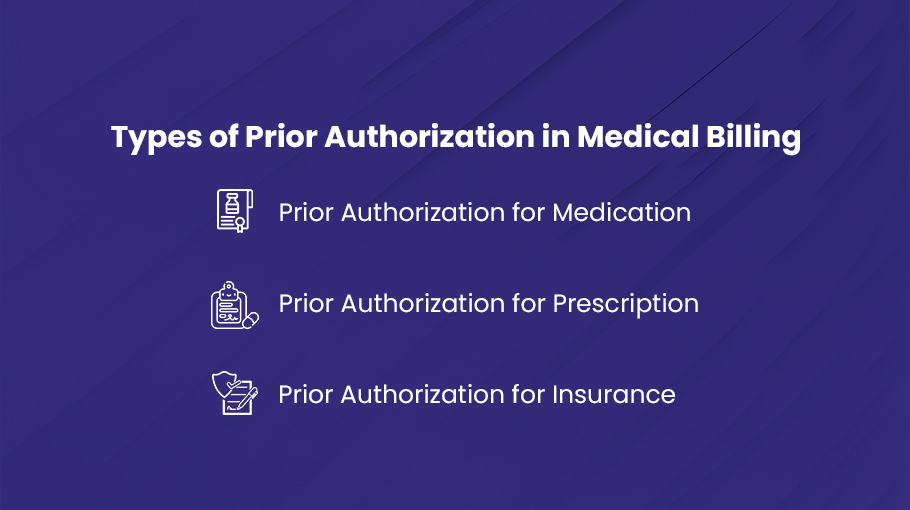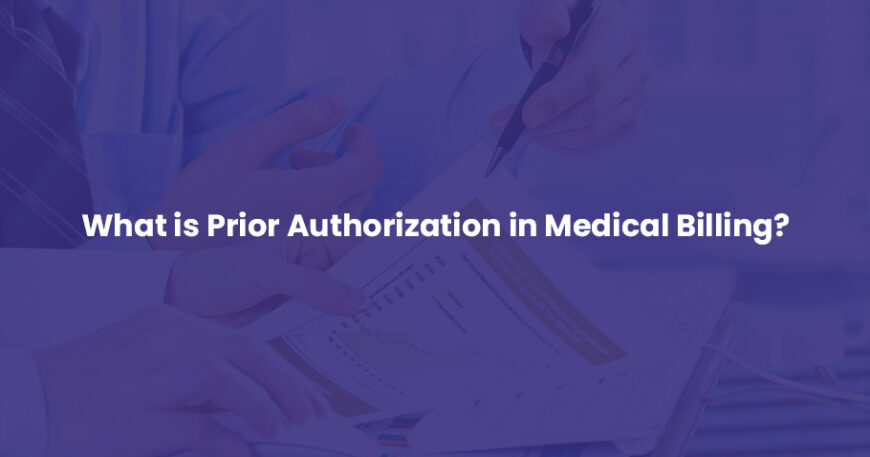Preauthorization, pre-approval, and precertification are all different names for prior authorization which means you need to get approval from your patient’s insurance provider before prescribing medication or delivering care.
As a healthcare provider, your top priority is delivering the best possible care to your patients. However, the ever-present reality of insurance can sometimes create roadblocks.
Prior authorization (PA), a process requiring approval from a patient’s insurer before providing certain services, is one such hurdle.
What is a Prior Authorization?
Prior authorization is a process mandated by some health insurance companies. It requires your doctor to get approval from your insurer before certain services are provided.
This can include:
- Medications (especially specialty drugs)
- Medical procedures (particularly complex or expensive ones)
- Durable medical equipment (DME)
- Diagnostic tests (like MRIs)
Health insurance companies use prior authorization as a utilization management strategy. This means they want to ensure:
➡ Medical Necessity: For example, “Is the requested service truly necessary for your specific condition? and/or are there potentially effective, less expensive alternatives?”.
➡ Cost-Effectiveness: For instance, “Does the benefit of the service outweigh the cost? and/or could a less expensive option achieve similar results?”.
How Does Prior Authorization Work?
Prior authorization (PA), often a source of frustration for both patients and healthcare providers, is a process governed by insurance companies that requires approval before certain procedures, medications, or equipment can be provided.
Here’s a breakdown of how pre-authorization works:
Step 1 – The doctor examines the patient and decides on a treatment plan.
The healthcare provider examines the patient and determines the course of treatment, which might involve a specific procedure, test, medication, or medical device.
Step 2 – The doctor checks if the patient’s insurance requires prior authorization for the proposed treatment.
Here’s where the complexity arises. The burden falls on the provider to check the patient’s specific health plan policy (list of covered medications) to see if prior authorization is required for the planned treatment.
Step 3 – The doctor manually evaluates the prior authorization rules.
Unfortunately, clinical and healthcare billing systems are often not integrated. This means provider staff has to manually review the prior authorization rules for the specific insurance plan – a process filled with inefficiencies.
The process is tiring as sifting through paper documents, PDFs, or navigating various payer web portals, each with unique and frequently changing guidelines is time-consuming.
Step 4 – If prior authorization isn’t required, the doctor submits the claim to the insurance company, though approval isn’t guaranteed.
If the provider determines prior authorization isn’t necessary, they can submit the claim to the payer for processing. However, approval is not guaranteed.
Step 5 – If prior authorization is required, the doctor provides details for each treatment code and gets an authorization number from the insurance company.
If prior authorization is indeed required, the provider must gather more details:
- Specific details for each CPT code (Current Procedural Terminology code) associated with the treatment.
- A unique number is assigned by the payer specifically for this prior authorization request.
Step 6 – The doctor submits the prior authorization request and waits days or weeks for the insurance company’s decision: approval, alternative treatment, or denial.
The provider submits the formal prior authorization request and then enters a waiting period that can last days or even weeks, depending on the complexity of the request and the healthcare system’s capacity.
The burden falls on the provider to persistently follow up with the insurance company until a decision is reached such as approval, redirection to a different treatment option, or denial.
Challenges Faced During Prior Authorization and The Solutions
The prior authorization (PA) process intends to ensure appropriate healthcare utilization and cost management. However, denials can create frustration and delays for patients and providers.
These are some of the roadblocks to prior authorization approval and its potential solutions:
❌ Cost Management: Health plans often favor less expensive medications or treatments with similar efficacy. A generic medication might be preferred over a brand-name one.
❌ Medical Necessity Concerns: If the PA request doesn’t adequately demonstrate that the proposed treatment aligns with recognized medical standards for the patient’s condition, it might be denied.
❌ Administrative Errors: Typos, incorrect billing codes, or missing information in the PA request can lead to rejection.
❌ Coverage Issues: Procedures like cosmetic surgery or treatments not approved by the FDA typically require prior authorization, and may not be covered at all. Additionally, some medications might be covered under pharmacy benefits, while devices used with them might fall under medical benefits, requiring separate PA requests.
❌ Missing Details: Insufficient information about why a specific medication or treatment is necessary can lead to denial.
❌ Procedural Hiccups: If a health plan requires prior authorization for a non-emergency test and the test is performed before approval, the payer might deny payment, even if medically necessary.
The Solutions 💡
✔️ Detailed and Accurate Documentation: Providing clear and comprehensive justification for the requested treatment, including relevant medical history and diagnosis codes, can significantly improve approval rates.
✔️ Electronic Health Records (EHR) Integration: Utilizing an EHR system that seamlessly integrates with insurance company systems can expedite the submission process and minimize errors.
✔️ Clear Communication with Patients: Keeping patients informed about the PA process and potential delays can help manage expectations and avoid unnecessary anxiety.
✔️ Collaboration with Payers: Healthcare providers can advocate for their patients and work collaboratively with payers to address any concerns or missing information in a timely manner.
Types of Prior Authorization

Prior authorization is more like a tool used by insurance payers to control the cost of services delivered by the providers. There are two types of prior authorizations:
1). Prior Authorization for Medication
Certain medications require prior authorization because of high risks for side effects and the sole purpose is to administer drugs that are safe and effective for their condition. These medications include:
- Medications with the potential to be abused, overused, or misused and have more cost-effective alternatives.
- Medications that carry a high risk of addiction
- Drugs for cosmetic use
- Rehabilitation
- Medical equipment
- Healthcare services for home
- Diagnostic imaging
- Non-emergency surgery
Prior Authorization Process for Medication:
- The prescriber orders medication for a patient to the pharmacy.
- When the order is received, the pharmacist is made aware of the prior authorization status of the medication, and the physician or prescriber is made aware.
- The physician’s office will start the pre-authorization process by collecting the information needed for approval using phone, email, or automated messages followed by long wait times until the PA is either approved or denied.
2). Prior Authorization for Prescription
Prior authorization for prescription is requested to ensure the cost-effective and appropriate use of prescription drugs. This feature allows providers to prevent improper use of certain drugs that may not be the perfect choice for a health condition.
Prior Authorization Process for Prescription
- The pharmacist enters the prescription information into the system so if the patient’s plan requires prior authorization for the medicine the pharmacist receives an alert and will contact the prescribing doctor.
- The doctor informs the patient if their plan allows for the drug use or not.
- If authorization is already approved, the prescription is filled. If not, the doctor will need to prescribe an alternative.
3). Prior Authorization for Insurance
Prior authorization for insurance in medical billing means getting approval from the insurance provider before certain medical services are rendered to the patient. This is to ensure the insurance company will cover the costs.
Prior Authorization Process for Insurance
- As a doctor, to get prior authorization for a patient’s procedure, first you have to determine if their insurance plan requires it for that particular service.
- If so, we submit a request to the insurance provider, including details about the patient’s condition and medical necessity of the procedure.
- Then we wait, often a week or longer, for the insurance company to review the case and determine whether they will authorize payment. It’s a tedious process, but a requirement by many insurers to avoid denied claims.
How to Improve the Prior Authorization Process?
Prior authorization (PA) is a necessary part of the healthcare landscape, but it can be a time-consuming task for both patients and providers.
Here’s how you can streamline the prior authorization process:
1. Documentation is Key:
Ensure all pre-authorization requests are accompanied by clear, comprehensive, and accurate documentation. This includes details about the patient’s diagnosis, justification for the specific medication or treatment, and any considered alternatives. Incomplete or poorly documented requests are more likely to be rejected, leading to delays.
2. Implement Automation:
Manual pre-approval processing can be a slow and error-prone affair. Consider implementing electronic health record (EHR) systems that integrate seamlessly with payer portals. This allows for faster and more accurate submission of prior authorization requests directly from the EHR.
3. Streamline Services Requiring PA:
Familiarize yourself and your staff with your payers’ specific pre-certification requirements. Develop a system to check for PA needs before services are rendered or prescriptions are sent to pharmacies. This proactive approach can save time and frustration down the line.
4. Maintain a List:
Create a comprehensive list of medications and procedures that require prior authorization for each of your major payers. Sources for this list can include copies of PA guidelines from payers or your EHR system’s flagging for medications on restricted tiers. Having this information readily available helps staff navigate the PA landscape efficiently.
5. Consider Specialist Support:
For high-volume practices, it’s crucial to delegate pre-authorization tasks to a dedicated team of specialists that can significantly improve efficiency. These specialists are well-versed in the intricacies of PA requirements and can handle the entire process, freeing up valuable time for you and your staff to focus on patient care.
By implementing these strategies, healthcare providers can significantly improve the prior authorization process. This not only reduces administrative burdens but also minimizes delays in patients receiving necessary treatments.
| Note: Collaboration between providers, payers, and policymakers can pave the way for a more standardized and streamlined PA system, benefiting everyone involved in the healthcare ecosystem. |
Tired of Facing Prior Authorization Delays and Denials? Let the Experts at ProcareMedex Help!
According to the AMA Prior Authorization Physician Survey, approx. 91% of patients experience some delay in receiving care due to lengthy prior authorization procedures.
Now, the delays in receiving prior authorization lead to postponed treatments and potential health complications. This unstructured follow-up process is a significant source of wasted time and effort for both providers and patients.
And this is where our authorization experts hit the jackpot for your practice. We deliver an efficient system and streamlined authorization process with clearer guidelines, standardized forms, and electronic submissions that significantly reduce administrative burdens and delays in care.
🎯 Electronic Health Records (EHR) Integration
🎯 Clear Communication with Patients and Payers
🎯 Accurate Documentation
Let’s partner up and create a system where we ensure timely authorizations and access to care while you focus on core tasks.
Frequently Asked Questions
1. What are some common services that need prior authorization?
Some common services that require prior authorization are:
- Hospital admissions
- Inpatient surgeries
- Some outpatient procedures
- Home medical equipment
- Advanced imaging machines such as MRIs and CT scans
Note: The services vary from provider to provider, therefore check with your provider the list of services that require prior authorization.
2. How do I know if a drug requires prior authorization?
Medications that require Prior Authorization are mentioned on the list of American Healthcare Preferred Drug List (PDL). So if a drug requires prior authorization, it will be represented with a “PA” next to the drug or you can contact the American Health Act (800) 872-8276 to find out if your medication requires PA.
3. What is medical necessity?
Medical necessity is the necessary care, services, supplies, or drugs needed for the prevention, diagnosis, or treatment of a condition on evidence-based clinical standards of care. We use medical records and recognized clinical guidelines to establish medical necessity.
4. Is Prior Authorization required for emergency services?
No, emergency services that need immediate attention do not require prior authorization and can be delivered without submitting PA requests.
5. What if I need a decision on my prior authorization request sooner than 10 days?
Emergency services generally do not require prior authorization. However, if it’s a matter of life or death for the patient you can request an expedited review of up to two business days. The request must include justification that the standard timeframe is not justified according to the current situation. The Medicare Administrative Contractor (MAC) identifies if the request is justified or not and proceeds accordingly.





